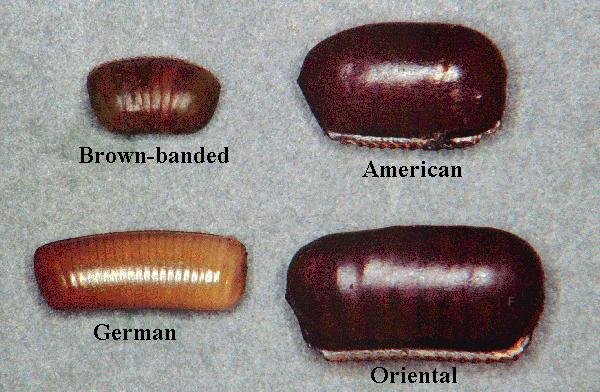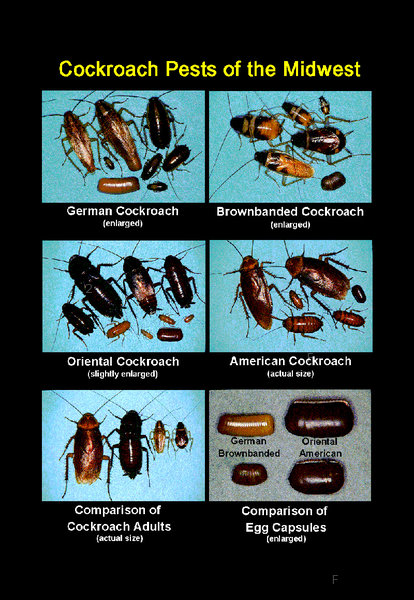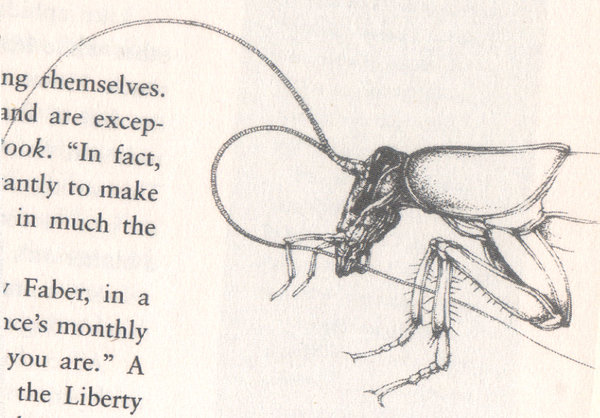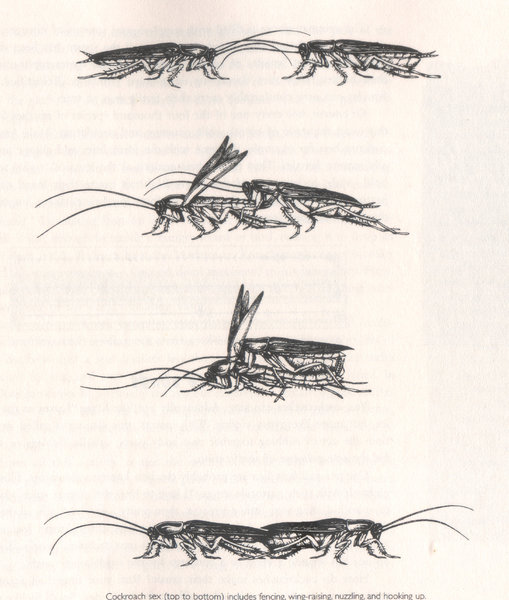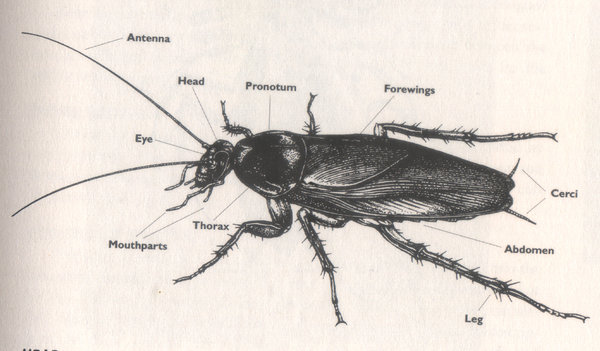|
 
- 帖子
- 338
- 精華
- 0
- 威望
- 80
- 魅力
- 0
- 讚好
- 0
- 性別
- 男
|
1#
 發表於 2005-6-15 02:28 AM
發表於 2005-6-15 02:28 AM
| 只看該作者
驚曱甴既就入黎la ~~~
之前因為功課既需要, 要對足曱甴一年, 一盒盒的曱甴放哂係間房度, 真係好難頂....$ O6 r% R) n3 n z7 w" }& {% o0 d7 p
. O1 H+ k: ?) J7 Y/ l
以下係我做既部份research, 可能你地對佢認識多左, 就會冇咁驚.....1 \- \8 B7 R! c' {$ z
) P: w2 o/ f1 U" `$ R$ ?3 n有d 人仲當佢係寵物咁養, 起埋web site比d 曱甴愛好者交流養曱心得....
/ o3 |0 s$ z1 L$ u% ~
/ _+ ?3 Y A! s1 ?===============================================7 Q5 [ m, Q6 R$ q8 M1 X4 z
# d2 [, F- ~- l
Links:
+ {( P% R; R1 U2 Y/ ?http://pested.unl.edu/cocktoc.htm (完全曱甴手冊)
; y8 A3 Z' I8 ~http://www.earthlife.net/insects/roach.html (教你點係間屋養曱甴)
) a/ }: K4 G; T5 Q$ khttp://www.angelfire.com/oh2/Roaches/links.html (many links)
9 K8 ?" \# ]7 x5 F9 Qhttp://www.isis.vt.edu/~fanjun/text/Link_specc01.html (many links)
D! w$ M( m! W6 B" G- G2 ^
9 X |! o4 ] O1 Y) T8 Y/ @5 E+ N-----------------------------------------------------------------------------------------2 M$ H; y8 A, j2 p% C* v$ H: S
2 Y! R, O& c' z1 O
Cockroach Biology : http://pested.unl.edu/chapter3.htm
- ?2 f G. D j! @( r, m; T% s
2 @5 ?1 V* L$ w3 F) t# s9 B7 H) KCockroaches are very primitive insects. Their ancestors lived 200-350 million years ago in the Carboniferous Period, even before the dinosaurs. This geological period is sometimes called the "Age of Cockroaches" because they were so abundant. At this time, the climate on the earth was warm and moist, ideal conditions for them to thrive. Although climatic conditions are cooler and less humid now, present-day cockroach species are surprisingly similar to those preserved in fossils from the distant past. $ ?, m- n" V) _; K5 D
0 t0 _3 ^+ f" w; b/ N
. Q9 @' G o' w/ V W
----------------------------------------------------------------------------------------3 ?1 Y- C3 X7 O' `9 Z
Cockroach Info From Y2K Commission
/ j% D9 M- C$ ^+ k2 RWednesday, 21 July 1999, 9:42 am
& h- ~; c L* b+ }Press Release:
( T. R$ Z9 t& u, U6 b! l+ i6 X" F! |+ t0 Q( Q! e9 ?3 C$ ^
7 [- X Z$ w+ H. P, c
Cockroach Facts and Figures 1 ]# ^3 t6 s1 Q9 n3 w+ b, A; I
9 E4 S3 ]6 _% t4 o5 |$ T• Cockroaches are real survivors. They have been around for 300 million years and live all over the world, either with humans or in a natural environment. Over 5,000 species have been identified. 1 m2 i4 ]% j0 Z
9 @7 O8 Z2 }0 h' O; M8 H, T7 ? C
• Cockroaches are very adaptive. They can live without food for two weeks, but will only survive a week without water. Cockroaches can regenerate limbs if any are damaged. In some species, females can reproduce without male input. In the event of a nuclear holocaust, it is believed that cockroaches will be the only creatures to survive. ' S6 m g. T0 A( A8 F! s* ?9 F
. z6 W. S' K# g9 Y7 r• As plant pollinators, prey items, and nutrient recyclers, they are essential components of coexistence.& F) ?% H% n* J. F) Z# L6 o8 b+ s' W
8 L* }- b" Z d$ D) M( }• If all insects were to suddenly disappear, hundreds of thousands of species of vertibreates and plants would soon perish. But if human beings were to disappear tomorrow, there will be a little change on the planet.
B6 X8 L; P' @( p- H9 J9 {
3 O( q& h! S# L: ]& s- S• The cockroach, which lived in the Carboniferous period, 55 million years before dinosaurs, was found in a coal mine in eastern Ohio by Cary Easterday, a graduate student in geological science at Ohio State University.
1 u, ~# a1 L- |4 l% V+ N( u
8 n0 T- X0 H( Y: p- J# t• Cockroaches are thought to be about 350 million years old, making them one of the oldest surviving creatures. They have been able to survive because of their rapid reproductive cycles and adaptability to poisons, environments, and even nuclear bombs.
2 ~* S5 ~' x+ h4 q8 C6 {/ d( j+ T5 D
• Their ability to withstand radiation is very interesting. They have a very hard outer shell or exoskeleton, which is less prone to absorb radiation. Their skin molts, which means shedding, and this removes the radiation. In addition, they have an unusual different chromosome structure, which is difficult for radiation to shatter. The butterfly is similar to the cockroach in this respect" V0 i0 r+ v! {. P; M$ b7 T7 r
& X: a" c u, ?; Y• Fossils show that cockroaches have been around for at least 340 million years. Nuts, seeds, nectar, and pollen would not appear for another 200 million years, dinosaurs were still 150 million years away, and humans did not appear for 300 million years.
. I3 n) {1 W# q9 b9 v2 o
$ s# }) A$ L. _9 g• As humans founded new villages across the world, they carried cockroaches with them.
) {6 A: a6 S% E6 j' d' I
& E. v; K9 z! y2 P$ ^$ a' n) b• Today, cockroaches live all over the world ?including the North and South Poles. : q6 j( {# p4 m6 n6 o
[# [1 k2 s' q• Some have been found thriving in coal mines 670 metres deep. $ c3 T2 @& q1 w" A1 J6 Y* a
6 G* N: I5 x# i
• One cockroach is thought to have travelled to space after it was found in the Apollo XII command shuttle.
, ~+ Y5 j e* S# d& Y' Y4 s& @) x. m2 n. E' O5 r+ R
• In the event of a nuclear holocaust, it is believed that cockroaches will be the only creatures
( c) B! E* B" q' k, E" zto survive.7 B7 D! \5 ^( m2 X
( \+ o I# X+ U1 {! y9 ~' q• Cockroaches have a lifespan of anything from 90 days to six years, depending on the species and environmental conditions. 2 x& }- j3 X0 j0 Q, S
0 _3 d. w8 z) A$ Y+ O/ }• Cockroaches can live without food for two weeks, but will only survive a week without water.
( g" A1 A) h0 @1 D2 `0 F O
6 l- i4 ] g& N' ?7 `4 S• Cockroaches eat almost anything, including each other if necessary. An A4 piece of paper will feed one cockroach for a week.
2 Z& L: s' ~5 R+ g2 ~7 s7 d* X, D1 i, r: S8 b
• There are currently around 5,000 identified cockroach species.
: Z' n. c5 g- i5 [% F4 |: a8 d" Y6 D% L
• Less than one percent of species are characterised as pests.
1 l. E$ U2 U$ Z' J. E5 p7 o. `4 }. X. k" [
( a/ P! A. [$ R• Cockroaches hate light ,they hide in dark crevices during the day.
* K7 H h6 z! rCockroach Anatomy
. x% o: [6 t9 L" y* w' F5 y7 e7 s m( f
• Cockroaches belong to the insect family.
$ Z% Q% ^" h- j# ?) Y
$ T6 f9 k0 u# e• Cockroaches are cold-blooded invertebrates they have no backbones or other internal supports. 1 W4 B A: d( e( M& B
* I E. M. \# }" O. D+ y* \
• A skeleton shell, worn on the outside, covers everything including the eyes.
6 C: ?6 w) L2 I' H% Y
) T6 ?5 U$ e# G( c8 t& A8 n0 E• Cockroaches can see in the dark. , Y) {. ^2 C1 m$ A) |6 H4 m, G
5 Y% ?0 A) z9 N# d. w6 T6 C: o5 f• Cockroaches have more muscles than humans. 6 C+ t6 S) t* q" |; i, O/ W/ r
3 l! G" d" r0 D( e6 E9 U2 @• Cockroaches can pull more than twenty times their own weight.
c, B, b) n5 A2 Q! c5 S# d4 V0 i
3 [' p) ~$ r8 A+ F4 P( i- R7 e• Cockroaches breathe through small holes in their abdomen.
- J+ \$ ~, e" z" ?# \4 S' [
: x# z0 r' R1 V9 @, c/ J5 s2 J/ _ l• Ears are located in each knee joint. ! }; C7 G7 R( ]3 k9 q2 E
1 l, D; R) M) E• Cockroaches have at least 18 knees.
! d6 P. r9 {7 R) G$ a1 K
; }0 Z8 R' P5 i- {# _• Cockroaches have two brains ,one in their head and one in their tail ?as a result they react to danger faster than the blink of an eye.
% @: B. w1 s5 D; _$ P
9 U- h: j1 }9 Y0 i R$ M• Cockroaches have two autonomous brains ,they don't need both to survive. Therefore cockroaches can remain active after their heads are removed. 7 g) r' }3 o- H, ]7 `+ m: P
, @& x0 H, R9 D" h* E( \% D! v• The largest measured cockroach was 15 centimetres long.
$ U- z' V% n( p% U
& g; q- T2 c: [2 y% c; B$ f• Cockroaches bleed white blood. 7 [) E/ v9 u4 v2 K8 D
# J- F2 z' }* TCockroaches and Sex
5 l. ^4 c x" n; ^ Y3 ~-----------------------------------------
( X! R2 t% E' b8 x•Males use hooks to clamp onto the female when mating ,once connected, an unbreakable bond is formed between the two animals, until the female conceives. " ~0 k0 C% `3 R
$ d7 y& W7 A% r• Some female cockroaches mate once and are pregnant for the rest of their lives. They die after giving birth.
" N5 S$ p5 \5 n6 I. J# `9 k
0 Y( t% E$ @# g6 J9 k @& M M• In some cockroach species, females can reproduce on their own, without any input from males. ( j7 X I; F; Y& [* H
. @% j: V# r. d: Q
• Adult females can produce up to 3,200 young in less than five months. Fortunately, the survival rate is not 100 percent. 2 H0 r9 m8 U4 u1 E1 f
8 N$ b5 W9 e$ Z2 `+ i' G2 {0 B% O& f: F% D) v# Q
- v$ f# a" A4 M0 c/ G/ H5 HCockroaches and Digestion $ y* G5 f! P! b2 i, |& k& V
--------------------------------------------------0 n. s4 l6 I7 q6 e9 o2 b; K
• Cockroaches break wind every 15 minutes and continue to release methane for 18 hours after death. Insect flatulence accounts for 20 percent of all methane emissions on earth, placing cockroaches among the biggest contributors to global warming. % M) Z& F$ U4 j% [3 r# N
% t: `% E, v1 b7 f5 b6 h( {" M7 J Y• Cockroaches have teeth in their stomachs to help with digestion.2 K# F& r/ p C: h
8 O+ s& l) L# M4 l) }
+ ?! p0 R- `3 D7 K
Other Interesting Information
/ o$ z$ t* l$ `( M0 j
! `$ x% m! s& \• Male cockroaches are extremely aggressive, often biting and kicking others, but aggressive female-female encounters are rare.
* g K7 N: H: ?# v5 }1 T6 Z9 n( u* n8 y# t# L% A0 v( {
• Cockroaches have extreme sensitivity to vibration and have been used as earthquake predictors.
# G, R8 Y* X y$ d# x: P
' b% o7 v q$ v• Cockroaches contribute to allergies and asthma in humans.
) A0 O. R# d0 x$ d% |, k( Q( |4 @1 z+ {5 ]/ T6 ?9 m
• Cockroaches can swim.
$ z$ i; R/ @' j% e" C% M# ^" j- ]3 g* {0 \: U @) m
• Cockroaches can run up to seven kilometres an hour. # l, J8 Y& K W3 K3 t
& X% H* B! L, g) S9 M0 I• Crushed cockroaches can be applied to a stinging human wound to help relieve the pain.
* g* o: d' Y+ ]+ S4 U6 O9 X9 V1 T2 U U9 I4 N
• Cockroaches are a source of food ?a succulent dish involves simmering cockroaches in vinegar, boiling them together with butter, farina, pepper and salt to make a paste, which is spread on buttered bread. 5 n, o; X3 E9 e( ^& n; i
7 r8 g% L5 I* S1 t5 m• Emergency medical technicians in Sydney were once called to a hostel to remove a 3.75cm cockroach trapped in the ear of a Swedish tourist.5 n8 p8 K# q8 z+ z! E0 A; R
' E( R2 d( h" S* `7 ^6 _5 g
) [$ G F, W' h, Y0 m |
|






 發表於 2005-6-15 02:28 AM
|
發表於 2005-6-15 02:28 AM
| 
